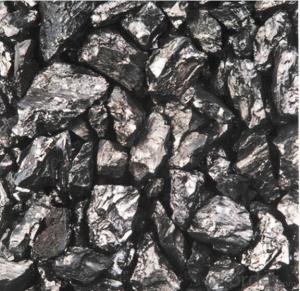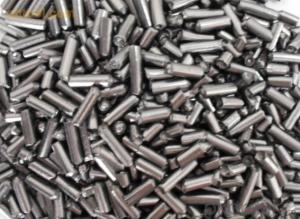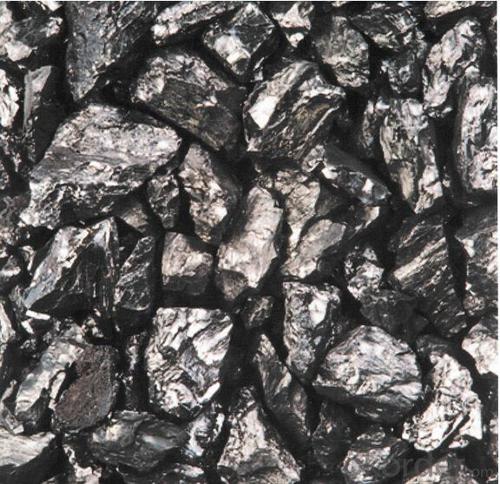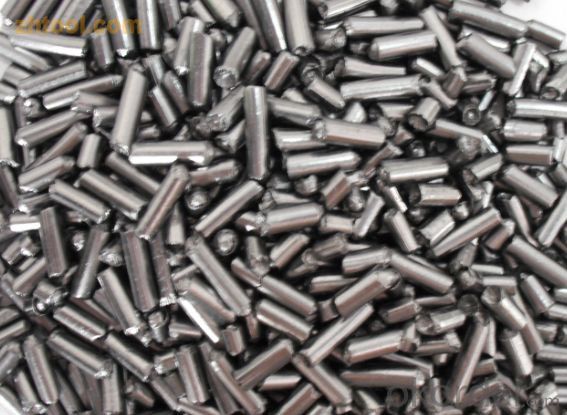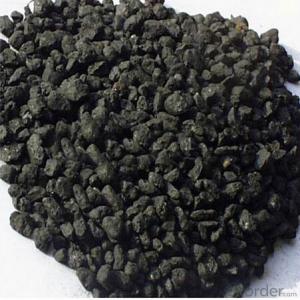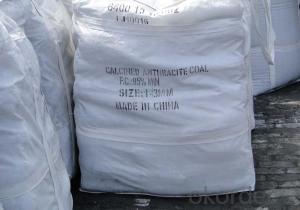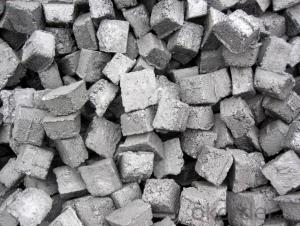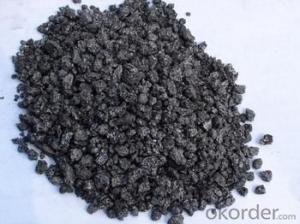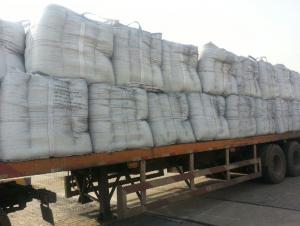Calcined Anthracite Coal Carbon Additive FC 90-95%
- Loading Port:
- Tianjin
- Payment Terms:
- TT or LC
- Min Order Qty:
- 20 m.t.
- Supply Capability:
- 10000 m.t./month
OKorder Service Pledge
OKorder Financial Service
You Might Also Like
Quick Details
Place of Origin: Ningxia, China (Mainland)
Application: steel making
Shape: granule
Dimensions: FC90-95%
Product Type: Carbon Additive
C Content (%): 90-95% MIN
Working Temperature: -
S Content (%): 0.5%MAX
N Content (%): -
H Content (%): 0.6%MAX
Ash Content (%): 8.5%MAX
Volatile: 2%MAX
ADVANTAGE: low ash & sulfur
COLOR: Black
RAW MATERIAL: TaiXi anthracite
Packaging & Delivery
| Packaging Details: | In 1MT plastic woven bag. |
|---|---|
| Delivery Detail: | 30-40DAYS |
Specifications
Calcined Anthracite Coal Carbon Additive FC 90-95%
Carbon Additve low Ash,S,P
FC>95% ASH<4% S<0.3%
It is made from TaiXi anthracite.
instead of pertrol coke reduce the cost
Structure
Calcined Anthracite Coal Carbon Additive FC 90-95%
Shape: granule
Dimensions: FC90-95%
Product Type: Carbon Additive
C Content (%): 90-95% MIN
Working Temperature: -
S Content (%): 0.5%MAX
N Content (%): -
H Content (%): 0.6%MAX
Ash Content (%): 8.5%MAX
Volatile: 2%MAX
ADVANTAGE: low ash & sulfur
COLOR: Black
RAW MATERIAL: TaiXi anthracite
Feature
Calcined Anthracite Coal Carbon Additive FC 90-95%
Specifications (%): | ||||||
Grade | F.C | Ash | V.M | Moisture | S | Size |
CR-95 | ≥95 | <4 | <1 | <1 | <0.3 | 0-30mm |
CR-94 | ≥94 | <4 | <1 | <1 | <0.3 | |
CR-93 | ≥93 | <6 | <1 | <1 | <0.4 | |
CR-92 | ≥92 | <7 | <1 | <1 | <0.4 | |
CR-91 | ≥91 | <8 | <1 | <1 | <0.4 | |
CR-90 | ≥90 | <8.5 | <1.5 | <2 | <0.4 | |
Image
Calcined Anthracite Coal Carbon Additive FC 90-95%
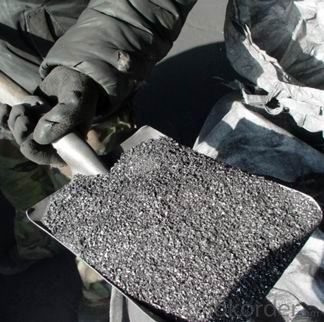
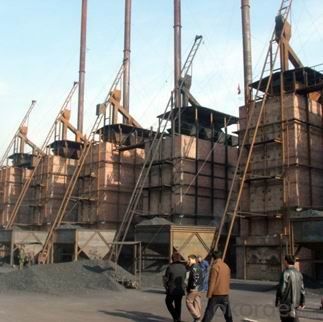
FAQ:
Calcined Anthracite Coal Carbon Additive FC 90-95%
Why we adopt carbon additive?
Carbon Additives used as additive in steel making process. It made from well-selected Tai Xi anthracite which is low in content of ash, sulphur, phosphorus, high heat productivity, high chemically activation.
Mainly industry property of it is: instead of traditional pertroleum coal of Carbon Additives, reduce the cost of steelmaking.
Advantage:
Calcined Anthracite Coal Carbon Additive FC 90-95%
1.High quality and competitive price.
2.Timely delivery.
3.If any item you like. Please contact us.
Your sincere inquiries are typically answered within 24 hours.
- Q: How is carbon used in the production of diamonds?
- Carbon is used in the production of diamonds through a process called high-pressure high-temperature (HPHT) synthesis. In this method, pure carbon is subjected to extremely high pressures and temperatures, replicating the conditions found deep within the Earth's mantle where natural diamonds form. By applying these conditions, carbon atoms rearrange and bond together, resulting in the formation of synthetic diamonds.
- Q: How do forests act as carbon sinks?
- Forests act as carbon sinks by absorbing carbon dioxide from the atmosphere through the process of photosynthesis. Trees and other plants take in carbon dioxide and convert it into oxygen, while storing the carbon in their trunks, branches, and roots. This stored carbon remains in the forest ecosystem, reducing the amount of greenhouse gases in the atmosphere and helping to mitigate climate change.
- Q: What are the impacts of carbon emissions on human health in developing countries?
- Developing countries are significantly affected by carbon emissions, which have considerable consequences for human health. The burning of fossil fuels and deforestation are the primary sources of these emissions, which contribute to the deterioration of air quality and give rise to a variety of health problems. Respiratory diseases are among the most immediate and visible impacts caused by high levels of carbon emissions. These emissions release harmful pollutants such as particulate matter and nitrogen dioxide, which can irritate the respiratory system and worsen existing conditions like asthma and bronchitis. In developing countries where access to healthcare may be limited, these respiratory diseases can be particularly harmful and lead to higher mortality rates. Furthermore, climate change, driven by carbon emissions, indirectly affects human health. Rising temperatures and shifting weather patterns can facilitate the spread of diseases transmitted by vectors, such as malaria and dengue fever. Developing countries often lack the necessary infrastructure and resources to effectively combat these diseases, resulting in increased rates of infection and mortality. Additionally, carbon emissions contribute to the formation of ground-level ozone, a harmful air pollutant. Exposure to high levels of ozone can cause respiratory problems, cardiovascular issues, and even premature death. Developing countries, with their limited access to healthcare and vulnerability to extreme weather events, may experience higher rates of illness and mortality due to ozone exposure. Moreover, carbon emissions contribute to the acidification of oceans, which negatively impacts marine ecosystems. This, in turn, affects the availability and quality of seafood, which is a vital source of nutrition for many people in developing countries. Impaired access to nutritious food can lead to malnutrition and various health issues, especially among vulnerable populations such as children and pregnant women. In conclusion, the impacts of carbon emissions on human health in developing countries are severe. The release of pollutants from burning fossil fuels and deforestation leads to respiratory diseases, the spread of vector-borne illnesses, ozone-related health problems, and nutritional deficiencies. These health impacts underscore the importance of prioritizing sustainable development and transitioning to clean energy sources in developing countries. Additionally, international cooperation is crucial in addressing this global issue.
- Q: What are the effects of carbon emissions on the Arctic ecosystem?
- Carbon emissions have significant effects on the Arctic ecosystem. The increased levels of carbon dioxide in the atmosphere contribute to global warming, causing the Arctic to warm at a faster rate than the rest of the world. This leads to the melting of sea ice, loss of permafrost, and rising sea levels. These changes disrupt the delicate balance of the Arctic ecosystem, affecting various species, including polar bears, walruses, and seals, as well as their prey. Additionally, the acidification of the oceans due to carbon emissions further impacts marine life, such as plankton and shellfish. Overall, carbon emissions have detrimental consequences for the Arctic ecosystem, threatening its biodiversity and functioning.
- Q: A carbon Roast Lamb Leg stores need to how much money
- Do about 50 thousand! Do not have their own skills, you have to learn, have time to look at the Weifang green, Mongolia edge, taste and scale are pretty good!
- Q: What are the consequences of increased carbon emissions on cultural heritage sites?
- The impact of increased carbon emissions on cultural heritage sites can be significant. One immediate and visible effect is the degradation of physical structures and artifacts. Carbon emissions contribute to air pollution, leading to the formation of acid rain. This acid rain contains high levels of sulfuric and nitric acids, which corrode and erode materials like stone, metal, and paint. Consequently, historic buildings, monuments, and sculptures can deteriorate and lose their original color. Moreover, carbon emissions also contribute to climate change, resulting in more frequent and severe weather events such as hurricanes, floods, and wildfires. These extreme weather events directly threaten cultural heritage sites, causing physical damage and even destruction. For instance, rising sea levels due to climate change erode coastal archaeological sites, leading to the loss of valuable historical artifacts and structures. Additionally, increased carbon emissions pose a threat to the intangible aspects of cultural heritage. Climate change disrupts ecosystems and biodiversity, impacting the natural surroundings of cultural sites. As a result, traditional knowledge, practices, and cultural landscapes linked to these sites can be lost. Changing environmental conditions may force indigenous communities to lose their ancestral lands and sacred sites. Furthermore, cultural heritage sites heavily rely on tourism for income and conservation funding. However, increased carbon emissions contribute to global warming, which alters travel patterns and preferences. Consequently, there may be a decline in tourist visits to these sites, impacting local economies and hindering conservation efforts. In conclusion, the consequences of increased carbon emissions on cultural heritage sites are diverse and far-reaching. It is essential to address and mitigate these emissions through sustainable practices and policies to safeguard and preserve our shared cultural heritage for future generations.
- Q: I bought a grill myself and went to barbecue with my friends the day after tomorrow, but I can't ignite the carbon. What should I do?
- Use alcohol to pile up the carbon into Pyramid type. Bring the alcohol up for a minute and then ignite. If there is no alcohol, buy a bottle of water from the building materials store
- Q: What is the relationship between carbon emissions and deforestation?
- The relationship between carbon emissions and deforestation is that deforestation contributes significantly to carbon emissions. When trees are cut down or burned, the stored carbon within them is released into the atmosphere as carbon dioxide (CO2), a major greenhouse gas. This process directly contributes to climate change and global warming. Additionally, deforestation reduces the Earth's capacity to absorb CO2 through photosynthesis, further exacerbating the carbon emissions problem. Therefore, reducing deforestation is crucial in mitigating carbon emissions and combating climate change.
- Q: How is carbon used in the production of nanoelectronics?
- The production of nanoelectronics involves the diverse utilization of carbon. One of the most notable applications is seen in the creation of carbon nanotubes (CNTs), which are cylindrical structures composed solely of carbon atoms. These nanotubes possess exceptional electrical and mechanical properties that render them highly suitable for incorporation into nanoelectronic devices. CNTs can serve as transistors, which serve as the fundamental building blocks of electronic circuits. Due to their diminutive size and outstanding electrical conductivity, CNT transistors have the capacity to generate high-performance, low-power devices. Consequently, they hold the potential to supplant conventional silicon transistors, thus enabling the development of more sophisticated and compact electronic devices. In addition, carbon plays a pivotal role in the production of graphene, a single layer of carbon atoms arranged in a two-dimensional honeycomb lattice. Graphene exhibits extraordinary electrical conductivity, thermal conductivity, and mechanical strength. Consequently, it can function as a conductive material in nanoelectronics, thereby facilitating the creation of swifter and more efficient electronic devices. Moreover, carbon-based materials can be employed in nanoelectronics for energy storage purposes. For example, carbon nanotubes and graphene can be harnessed in supercapacitors, energy storage devices that possess the ability to rapidly store and discharge substantial amounts of electrical energy. These carbon-based energy storage systems hold the potential to revolutionize the realm of portable electronics and electric vehicles. In conclusion, the extensive utilization of carbon in the production of nanoelectronics can be observed. Its distinctive properties, including heightened electrical conductivity, mechanical strength, and thermal conductivity, render it an ideal material for the advancement of high-performance electronic devices. Carbon nanotubes, graphene, and other carbon-based materials serve as crucial components in the fabrication of nanoelectronic devices, thereby enabling progress in computing power, energy storage, and the miniaturization of electronic components.
- Q: What is carbon dioxide?
- Carbon dioxide (CO2) is a colorless and odorless gas composed of one carbon atom bonded to two oxygen atoms. It is naturally present in the Earth's atmosphere and is also produced by human activities such as burning fossil fuels and deforestation. Carbon dioxide plays a crucial role in the Earth's carbon cycle and is a greenhouse gas, contributing to global warming and climate change.
Send your message to us
Calcined Anthracite Coal Carbon Additive FC 90-95%
- Loading Port:
- Tianjin
- Payment Terms:
- TT or LC
- Min Order Qty:
- 20 m.t.
- Supply Capability:
- 10000 m.t./month
OKorder Service Pledge
OKorder Financial Service
Similar products
Hot products
Hot Searches
